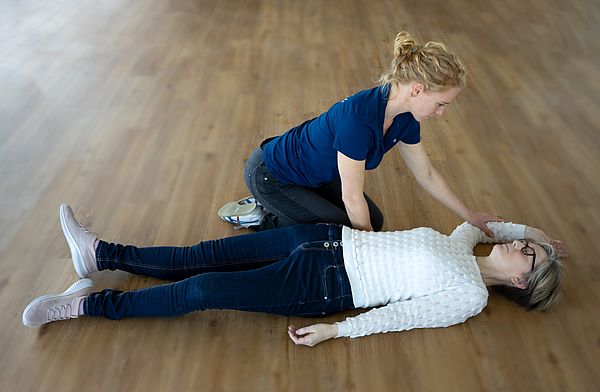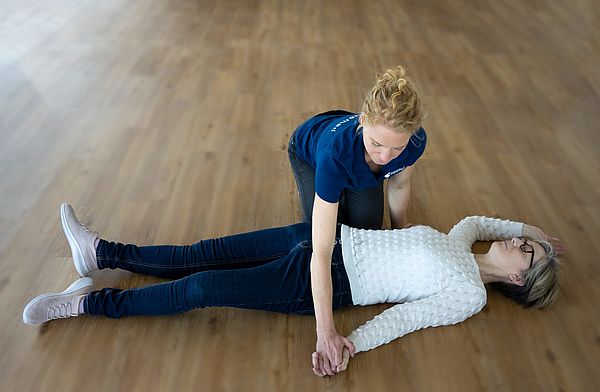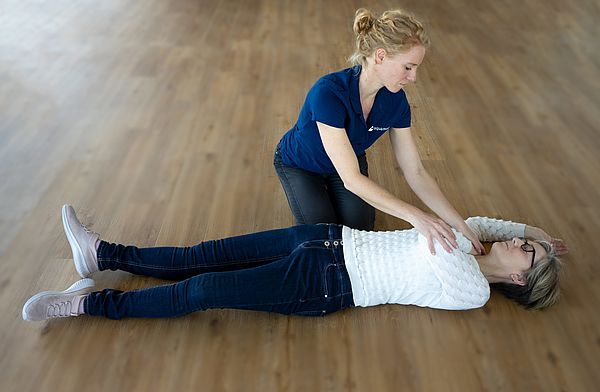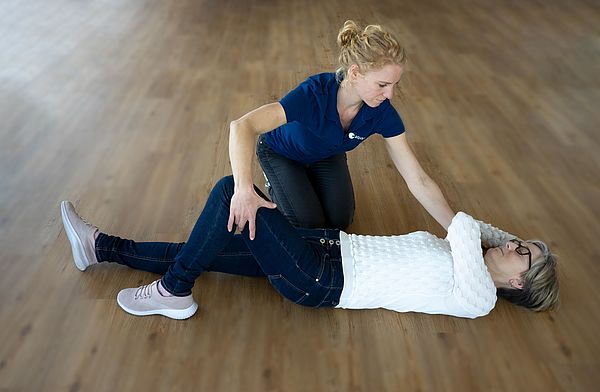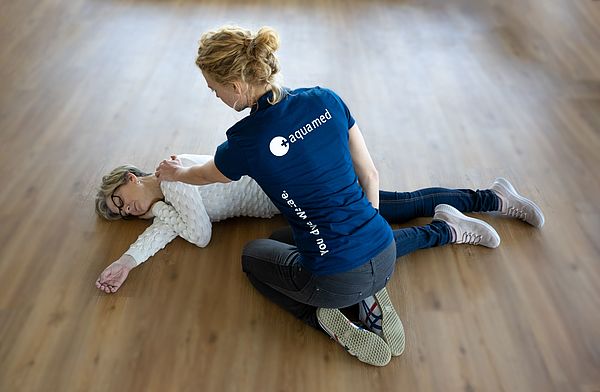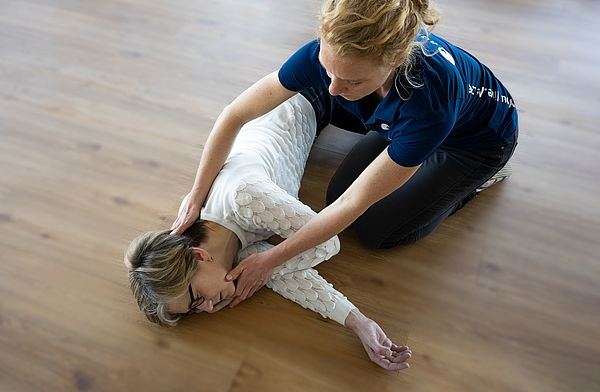Emergency guide

Finding an injured or dead person
- First of all, assess the situation
Pay attention to safety
Always protect yourself and ensure your own safety! Only then can you look after the injured person.

Then turn to the injured person and check whether they are conscious
Checking consciousness
- Address the injured person in a loud voice and establish body contact

Person is conscious

Person is unconscious
- Check breathing (look, listen, feel, max. 10 seconds)

- Call for immediate assistance (bystanders, pedestrians), speak to them directly and get help / call the emergency services.
- Then look after the injured person until professional help arrives.

ALWAYS call for help and call the emergency services
Emergency Call: 112
Call the emergency services! Once you have received help for your urgent emergency situation, you can also call the aqua med emergency hotline for further assistance:
+49 421 240 110-10 (diveline)
What to do if the person is unconscious
The person is breathing
- Put the person in recovery position
- Check breathing continously
- Give 100% O2 (after a diving accident)
- Stay with the person and wait until the emergency services or a doctor arrive(s)
The person is NOT breathing
- Begin cardiopulmonary respiration (CPR: 30 chest compressions at a rate of approx. 120 per minute → (standard rule: rhythm from Stayin' Alive by the Bee Gees)
- Provide artificial respiration, if possible, two times after each 30 chest compressions
- Try to obtain an automated external defibrillator (AED); if no AED is available, continue with CPR
- If an AED is available, follow the instructions for the device; if necessary, shock using the AED (ensure you protect yourself)
- Repeat these steps until the injured person is breathing independently or a doctor has arrived
What to do in case of a decompression sickness
In the event of decompression sickness (DCS), a distinction is made between mild and severe symptoms
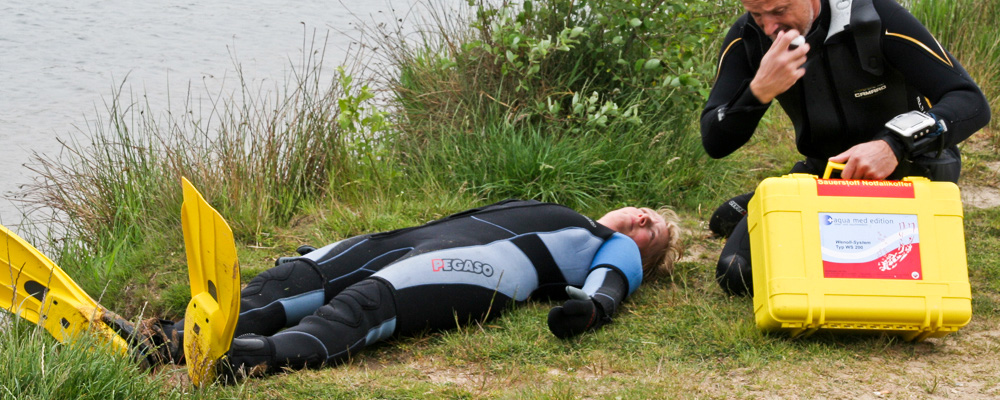
Mild symptoms
- Fatigue
- Itching
- Give 100% O2 (if possible using a demand valve)
- Give fluids (0.5 - 1 litre per hour)
- If there are still any symptoms after 30 minutes: Continue treatment as with severe symptoms
Severe symptoms
- Pain
- Skin abnormalities (redness, rash, e.g. cutis marmorata)
- Numbness, pins and needles
- Severe nausea / dizziness / loss of hearing
- Problems with speech / breathing / movement
- Give 100% O2 (if possible using a demand valve)
- Give fluids (0.5 - 1 litre per hour), not if there is risk of fainting
- Initiate recompression therapy
Procedure for either mild OR severe symptoms
- Call for help and have someone call the emergency services
- If the diver is unconscious, proceed as described in the emergency guide
- Ensure the person remains calm. Do not force the person to lay down!
- Protect the injured person from becoming too cold or too hot
- Caution: The signs of a diving accident may also be delayed!
Keep the person and any other divers under observation until the emergency services or a doctor arrive(s) - Secure the equipment and hand over the dive computer to the emergency services

